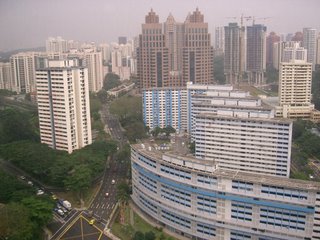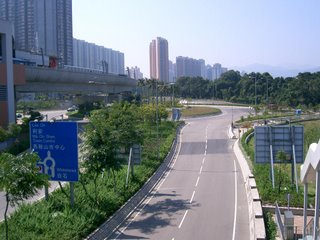Security
A frequent question that is asked of us as we live in Beibei is “are you safe and secure?” Travel to and living in a new, different place always involves a certain element of insecurity. The unknown is inherently insecure, and being plunked down in the middle of Beibei certainly involved a lot of unknowns several months ago. By now, most of those unknowns are knowns and most of the initial feelings of insecurity have turned to feelings of security and familiarity.
My wife and I have traveled a lot, and as we do we like to venture off the beaten path followed by most tourists. Our behavior in China has been no different. Both in Beibei and elsewhere, we have usually shopped where the local people shop, traveled on the same buses they travel on, and eaten in the same restaurants they eat in. In so doing, we have developed a pretty good sense of what individual security is like in Beibei and other cities we have visited.
My wife and I walk around town and campus freely at any reasonable hour with absolutely no concerns. In Beibei, many streets and parts of campus are irregularly illuminated at night. We walk alone, and even when we venture into previously unexplored territory we have never felt threatened. We have been approached by the curious (and avoided by the fearful) but never in a malicious fashion. I have no concern at all about my wife walking alone on our local streets at night.
Our apartment is on the ground floor, hence there are bars on all of the windows—this is standard for most dwellings. We are a little special in that we are in a compound with a gate that is locked at 11pm and we have a night watchman (who probably sleeps more soundly than I do). Also, right out of our back window is a police sub-station. At night, the four or five city block apartment complex that we are in is patrolled by two police officers with a dog. The front door to our apartment, when locked, could be opened by any 7-year old with a Jack of Spades. Nonetheless, we have never had a known robbery attempt and usually leave the door unlocked. We certainly do not feel, nor have we had reason to feel, threatened.
On campus, things look a lot like a U.S. campus. There are guards at the gates to the campus [see photo]. They seem to let anything in, but check vehicles leaving. I presume this is to prevent the faculty, etc, from confiscating University property. On campus there are uniformed police who deal with bike accidents and other important issues. There are also plain clothes police. I like these guys—they are very friendly with the students and usually have a very visible ID around their neck that says something in Chinese characters and then “Police” in English. They pop up all over campus in a very unobtrusive way. When you think about it, it is really nice to have police around when you don’t need them; and, the fact that they are around is probably why you don’t need them. In police work, a good defense always trumps a good offence.
One of the real surprises here has been the absence of firearms on police, bank guards, and other uniformed civil servants. Most carry a night stick and that is it. In addition, I have not seen a single citizen with a firearm. Perhaps if neither side has them, neither side needs them in normal day to day police work.
We have found that when we are lost a good place to ask directions is at a bank because there is frequently someone there who speaks a little bit of English and they usually know their neighborhood. One day we went into a bank and asked for directions to the post office. The lone bank guard led us out of the bank, down the street for about a block, waited until the proper bus came along and then put us on the bus with instructions to the driver. Nice of him, but all of the time he was being kind to us the bank was left unguarded. One has to conclude that to him leaving the bank unguarded was less of a threat than having some poor lost Americans running wild in the community.
Honesty
With the exception of some aspects of the tourist industry, tipping is not practiced in China. In fact, we have been told that it is something of an insult. Early on, I left a little tip on a restaurant table only to have the owner chase me down the street and return my “forgotten” money.
Several days ago we were on an intercity bus. As we got off a nice passenger noted that I had left a piece of money on my seat (a $0.12 bill). He got it and gave it to my wife as we got off the bus. Again, and again, we see little things like this that reflect a very fundamental value of honesty. And we see fairness. All classes (this is not a “classless” society) treat one another fairly—we all wait in line and we are polite to one another (unfortunately, there are rare exceptions).
When you are in a country of 1.3 billion people, you are always living elbow-to-elbow, even out here in Beibei. One consequence of this is that wherever you are, there are 5, 10 or 15 other people. In this environment, everything seems to be participatory. On several occasions, merchants have tried to over-charge us only to have one or more local resident intervene on our behalf and talk the merchant down. It is evident that they don’t like to see anyone cheated—even “rich” Americans.
Is this a modern dream world? No way. Last week as we got off a bus in Chongqing a woman ostensibly tried to stuff an advertisement into my wife’s pocket—obviously a pickpocket. I got off the bus about three or four passengers later and the same woman tried to rip an umbrella from my backpack. She has a sore arm today. As this happened, a total stranger in the crowd saw her, grabbed her, chewed her out, and sent her on her way. Ordinary people here just don’t like to see ordinary people (even Americans, who obviously are not ordinary) treated unfairly. This is the only time we have been physically attacked while here, and it came to naught.
We have had an occasional cab driver try to rip us off (200 for a trip we know costs 50) and that sort of thing. As an obvious foreigner you expect that. But we have had twenty honest cab drivers who have bent over backwards to understand us and to help us along our way for every one that has tried to rip us off. I bet you can’t get those odds in New York City.
Speaking of which—my observations are based on our daily life in Beibei and brief visits to several large cities. It is my hope that Chinese visitors in Gainesville are treated with as much courtesy, honesty, and humility as we have received here. I am confident that life in Shanghai, Beijing, and other large cities is probably just as “rough” as life in Miami or New York City. Please help our visitors to Gainesville return to their countries with pleasant memories of the U.S. and its people, as we will return to the U.S. with pleasant memories of China and its people.
 As we prepare to leave Beibei, I would like to update two earlier reports. The University of Florida made our trip to China possible by granting me a semester of academic leave. The purpose of academic leave is to learn, and as these amendments demonstrate; learning continues.
As we prepare to leave Beibei, I would like to update two earlier reports. The University of Florida made our trip to China possible by granting me a semester of academic leave. The purpose of academic leave is to learn, and as these amendments demonstrate; learning continues.








